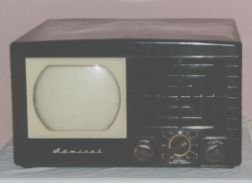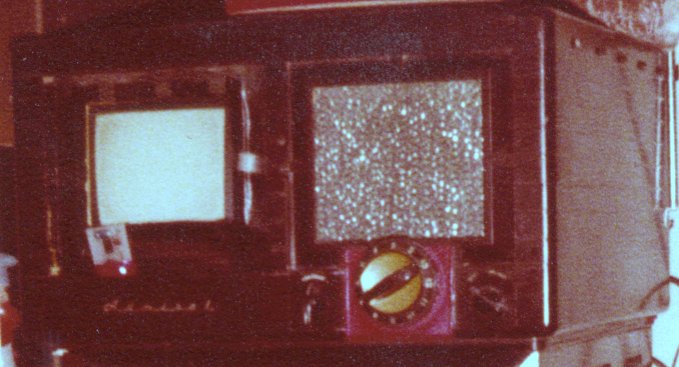Admiral 7 inch TV

Not much more than an FM radio with a scope hooked up to it, these sets are just plain fun.
Since the CRT is electrostatic and it has no yoke or anode button, you can make up a Y-cable and run two CRT's on one chassis.
In addition, the 7JP4 tubes usually had a gap between the aquadag coating and the screen, so you can actually watch the back of the picture.

My set was in rather poor cosmetic condition when I got it. In addition, I didn't have the .01 mfd and .05 mfd 6KV caps needed for the deflection. All I had were the 500 pfd doorknob caps, so I used them. The result was a smaller (but cuter) picture. This particular set has seen a lot of use since I fixed it up around 1965. I fired it up on Thanksgiving day 2000, and it still works.
That little thing stuck in front of the CRT is an LM3909 flasher, the modern equivalent of the old neon lamp relaxation oscillator.
Some of you may wonder what a doorknob cap is. Well, they're usually found in the doghouse, something else no longer seen in TV sets. The doghouse is the metal cage which held the flyback transformer, the rectifier tube, and the high voltage ceramic capacitor. Since it was shaped something like a doorknob, that's what it was nicknamed.
Nowadays, the HV rectifier is a solid-state device built into the flyback, and the outer conductive coating on the picture tube forms a capacitor with the internal aquadag coating. The glass envelope makes a very good dielectric.
Museum page

